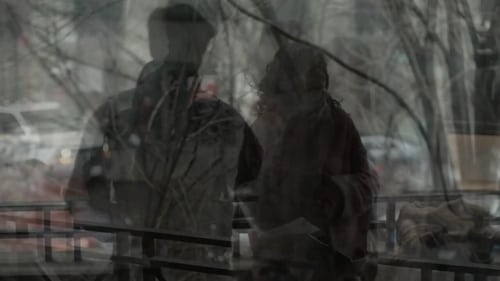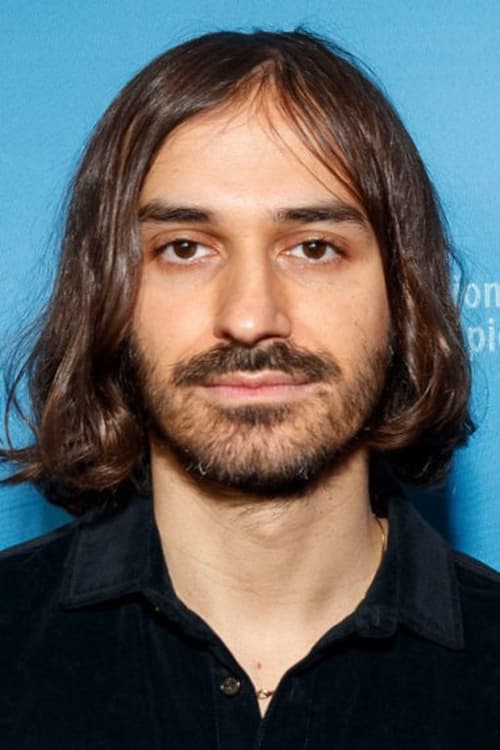Matías Piñeiro
出生 : 1982-05-11, Buenos Aires, Argentina.
略歴
Matías Piñeiro (born 11 May 1982) is an Argentine filmmaker, screenwriter and performer known for his work in Rosalinda, Viola, La Princess of France and Hermia & Helena. Piñeiro is one of the most prolific filmmakers of his generation and exponent of the new Argentine cinema.

Producer
An adaptation of “Sea Foam”, a chapter from Cesare Pavese’s “Dialoghi con Leucò” published in 1947. The ancient Greek poet Sappho and the nymph Britomartis meet beside the sea and have a conversation about love and death. Sappho is said to have thrown herself into the ocean from lovesickness. Britomartis apparently tumbled off a cliff and into the water while fleeing from a man. Together, the two discuss the stories and images that have emerged around them to try and understand, at least for a moment, the bittersweet nature of desire.

Director of Photography
An adaptation of “Sea Foam”, a chapter from Cesare Pavese’s “Dialoghi con Leucò” published in 1947. The ancient Greek poet Sappho and the nymph Britomartis meet beside the sea and have a conversation about love and death. Sappho is said to have thrown herself into the ocean from lovesickness. Britomartis apparently tumbled off a cliff and into the water while fleeing from a man. Together, the two discuss the stories and images that have emerged around them to try and understand, at least for a moment, the bittersweet nature of desire.

Screenplay
An adaptation of “Sea Foam”, a chapter from Cesare Pavese’s “Dialoghi con Leucò” published in 1947. The ancient Greek poet Sappho and the nymph Britomartis meet beside the sea and have a conversation about love and death. Sappho is said to have thrown herself into the ocean from lovesickness. Britomartis apparently tumbled off a cliff and into the water while fleeing from a man. Together, the two discuss the stories and images that have emerged around them to try and understand, at least for a moment, the bittersweet nature of desire.

Director
An adaptation of “Sea Foam”, a chapter from Cesare Pavese’s “Dialoghi con Leucò” published in 1947. The ancient Greek poet Sappho and the nymph Britomartis meet beside the sea and have a conversation about love and death. Sappho is said to have thrown herself into the ocean from lovesickness. Britomartis apparently tumbled off a cliff and into the water while fleeing from a man. Together, the two discuss the stories and images that have emerged around them to try and understand, at least for a moment, the bittersweet nature of desire.

Screenplay
Who is Sycorax? The first character in Shakespeare's "Tempest" to set foot on the island. The problem is that she has no voice. She is barely mentioned by Prospero as a crooked, old, wicked witch who vilely locked Ariel, the spirit of the air, in a tree. But why would she do that? Here, we wouldn't believe Prospero so much.

Director
Who is Sycorax? The first character in Shakespeare's "Tempest" to set foot on the island. The problem is that she has no voice. She is barely mentioned by Prospero as a crooked, old, wicked witch who vilely locked Ariel, the spirit of the air, in a tree. But why would she do that? Here, we wouldn't believe Prospero so much.

Idea
Pereda returns with a small, mysterious and moving tribute to Chantal Akerman, conceived as a series of joyful impossible letters addressed to the great disappeared from the cinema, to answer her fictional question about renting her bright apartment in Coyoacán.

Writer
Mariel wants to play Isabella in Shakespeare’s “Measure for Measure”. With the support of Luciana, who is also an actress, she has already rehearsed the part. But during the audition, Mariel realises that Luciana is trying out for the same role.

Director
Mariel wants to play Isabella in Shakespeare’s “Measure for Measure”. With the support of Luciana, who is also an actress, she has already rehearsed the part. But during the audition, Mariel realises that Luciana is trying out for the same role.

Director

Young Man
Diane is a devoted friend and caretaker, particularly to her drug-addicted son. But as those around her begin to drift away in the last quarter of her life, she is left to reckon with past choices and long-dormant memories.

Script

Director

Screenplay
Camila, a young Argentine theater director, travels from Buenos Aires to New York to attend an artistic residency to develop a Spanish translation of Shakespeare's "A Midsummer Night's Dream." Upon her arrival, she begins to receive a series of mysterious postcards which set her down a winding path through her past and towards her future.

Director
Camila, a young Argentine theater director, travels from Buenos Aires to New York to attend an artistic residency to develop a Spanish translation of Shakespeare's "A Midsummer Night's Dream." Upon her arrival, she begins to receive a series of mysterious postcards which set her down a winding path through her past and towards her future.

Director

Idea

Director

Narrador

Director
Shot at the National Museum of Fine Arts in Buenos Aires, In the Museum results from photographs taken with a nude painting during the director's previous feature, La Princesa de Francia. Six months after the filming, Matías Piñeiro returns to New York and realizes that he had taken with him the photographic camera that had supported the film and where are the photographs taken by the character Jimena (here, Gabi Saidón) in one of the scenes in the museum.

Writer
A year after his father’s death, Victor returns to Buenos Aires in order to reconquer the life he was forced to abandon. He brings a new project with him for his former theater company: a radio-play of Shakespeare’s “Love’s Labour’s Lost”.

Director
A year after his father’s death, Victor returns to Buenos Aires in order to reconquer the life he was forced to abandon. He brings a new project with him for his former theater company: a radio-play of Shakespeare’s “Love’s Labour’s Lost”.

Self
Interview with filmmaker Matías Piñeiro. Recorded February 2014.

Screenplay
Several actresses get caught up in a web of romantic intrigue while performing in a production of Shakespeare's "Twelfth Night."

Director
Several actresses get caught up in a web of romantic intrigue while performing in a production of Shakespeare's "Twelfth Night."

Screenplay
A group of actors retire to an island in Tigre to rehearse William Shakespeare’s As You Like It and suddenly Luisa, who is playing Rosalinda, makes a bad decision.

Director
A group of actors retire to an island in Tigre to rehearse William Shakespeare’s As You Like It and suddenly Luisa, who is playing Rosalinda, makes a bad decision.

Director
Six soldiers wandering in search of enemies in the forest where they can't see an inch ahead. While gathering on the island to prepare Shakespeare's play, Luisa finds out that other actors are stalking her. A pig iron ephemera transported to a steel mill.

Writer
A group of girls and boys in their twenties settle in a country house that seems completely isolated from civilization, invited by Helena, who plans something humiliating for one of the guests.

Director
A group of girls and boys in their twenties settle in a country house that seems completely isolated from civilization, invited by Helena, who plans something humiliating for one of the guests.

Screenplay
A young Argentinian woman who works as a museum guide uses her passion - reading - as a means of expression to channel the emotional and working lives of those around her.

Director
A young Argentinian woman who works as a museum guide uses her passion - reading - as a means of expression to channel the emotional and working lives of those around her.

Writer
Eleven young film-makers got together to collaborate in this atypical project. Atypical not only because of its technical specs, but because of its narrative structure. There are several scenes with only the city in common, and more as a conceptual presence at that than as a precise geography. None of those scenes contains a single "story": Each one of them is part of a larger situation that we cannot see, as though the beginning and end of each "story" had to be filled in by the audience.

Director
Eleven young film-makers got together to collaborate in this atypical project. Atypical not only because of its technical specs, but because of its narrative structure. There are several scenes with only the city in common, and more as a conceptual presence at that than as a precise geography. None of those scenes contains a single "story": Each one of them is part of a larger situation that we cannot see, as though the beginning and end of each "story" had to be filled in by the audience.

Director
Matías Piñeiro's first film, produced when he was a film student.












